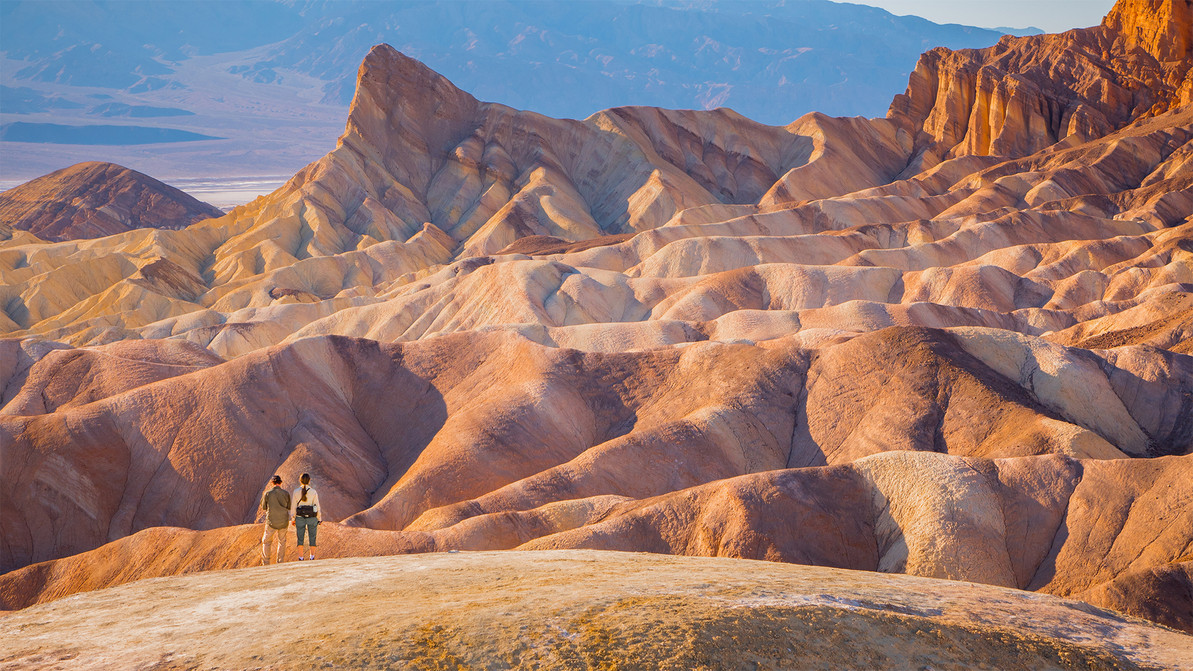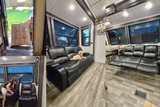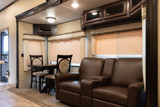When It Comes To Your RV, Don't Store, Explore!
Many people put the RV into storage during the winter, which is understandable. Driving and camping in snowy weather aren’t for everyone.But taking a winter camping trip does have its advantages, including less crowded areas and the avoidance of summer heat and insects.
We’ve put together a list of half a dozen winter-friendly places across the United States that are perfect for RV camping. These places aren’t going to give you the equivalent of a tropical vacation, but they have mild and mostly dry winter weather, which is perfect for driving the RV.
Death Valley National Park
If Death Valley’s triple-digit summer temperatures are too much for you (and your RV’s cooling system), visiting this park in the winter is a smart idea. The average high in January is 67 degrees with an average low of 40 degrees. Precipitation is almost non-existent throughout the year.Death Valley National Park on the California/Nevada border has amazing dunes and other impressive desert features. With nearly 1,000 miles of roads and 3 million-plus acres for hiking and exploring, this park provides the perfect place to take your recreational vehicle in the winter.
Mojave National Preserve
The Mojave National Preserve, which is between Los Angeles and Las Vegas, offers desert-like plains and mountains, which provides an excellent level of variety for hiking and scenery during your RV camping trip.In the lower elevations, average highs in January are 61 degrees, while at the higher elevations, average highs are 50 degrees in January. Average low temperatures are about 34 degrees in January throughout the preserve. Precipitation is less than 10 inches per year, so you should have good driving conditions most of the time.
Big Bend National Park
Along the West Texas and Mexico border, Big Bend National Park has both deserts and mountains, including a beautiful view of the Rio Grande River and great hiking trails.Although temperatures are often in the 80s and 90s during the summer, winter weather in the park is comfortable, while providing limited precipitation. Average January highs are 61 degrees with lows around 37 degrees at the lower elevations. At higher elevations, high temperatures average about 54 degrees in January with lows around 34 degrees.
Average precipitation in the combined December through February time frame is only 1.5 inches.
Padre Island National Seashore
Bird watchers will love Padre Island National Seashore along the Gulf of Mexico in the winter, south of Corpus Christi, Texas. It’s the longest stretch of undeveloped barrier island in the entire world.Temperatures are mild in January at Padre Island, averaging about 65 degrees for the high with average lows around 49 degrees. Winter rains are possible along Padre Island, as January averages about 1.5 inches of precipitation each year.
Canaveral National Seashore
Outdoor sports like canoeing, hiking, fishing, and bird watching all are popular in the winter time at Canaveral National Seashore along the east coast of Florida, just east of Orlando. If you time your visit just right, you may have a chance to see a rocket launch from Cape Canaveral too.Average highs in the area are about 60-70 degrees in January, while lows are around 40-50 degrees. Precipitation is approximately 2.75 inches in the area during January, which is a lot, but it’s much drier than in the summer when 7-8 inches of rainfall per month is typical.
Everglades National Park
At the southern tip of Florida, you’ll find Everglades National Park. Wildlife viewing is more comfortable in the winter months, as temperatures are mild and biting insects are far less common. You also can hike, boat, fish, and canoe in the Everglades.The average January high is 78 degrees, while the average low is 54. The weather is far more comfortable than the hot and humid conditions you’d find here in the summer with highs in the 90s and lows in the 70s.Precipitation here is common all year round, but the park area is far drier in the winter than in the summer. Average January rainfall is 1.65 inches, while you can expect 7-9 inches of rain per month in the summer.
Recent Posts
-
Traveling to the RV Hall of Fame in Elkhart, IN
If you are traveling to Elkhart, IN to see the RV Hall of Fame, getting off the toll road at exit 96 …Nov 14, 2025 -
Best RV Air Conditioners of 2025: An Expert Guide From RecPro
Quick Answers Best overall RV air conditioner: RecPro 15K Quiet AC with Heat Pump (RP-AC3800) Best f …Oct 29, 2025 -
The Nuclear Nomads Expand Sofa with New Recliner Section Install
The Nuclear Nomads are a full time RV family living in south Florida. Andi and Joey value quality ti …Oct 24, 2025 -
Trailer Wiring Guide: How to Wire Your Trailer for Safety and Efficiency
Table of Contents 1. Common Types of Trailer Connectors 2. Trailer Wiring Diagrams: Color Codes and …Aug 20, 2024 -
How to Keep Your Pets Safe While Camping
RVing and camping are a great getaway from the hustle and bustle of work and the city and the day-to …Jul 02, 2024 -
Why Replace Your RV Furniture?
You may wonder when is the best time to replace your RV furniture. There is no one right answer to t …May 20, 2024







